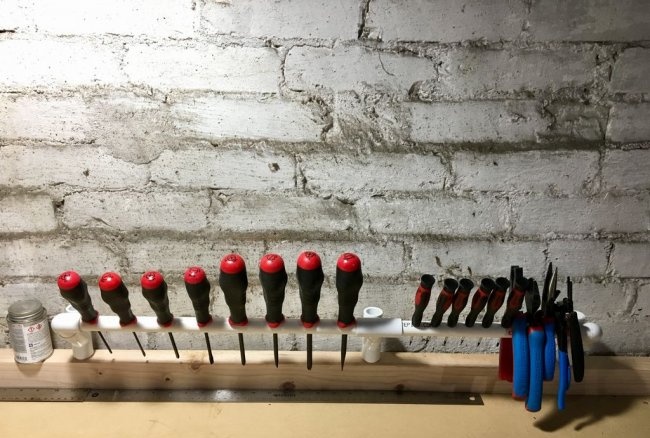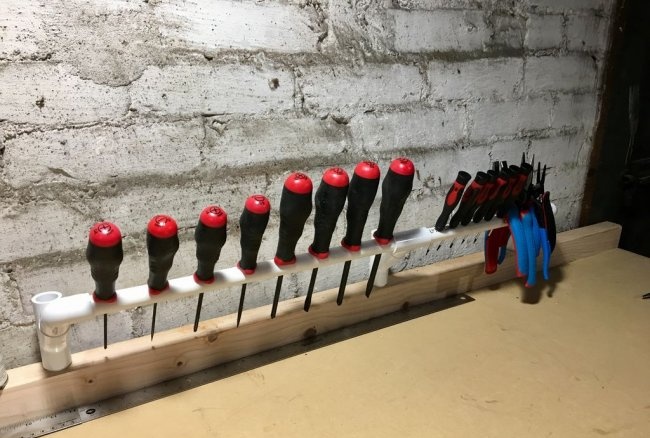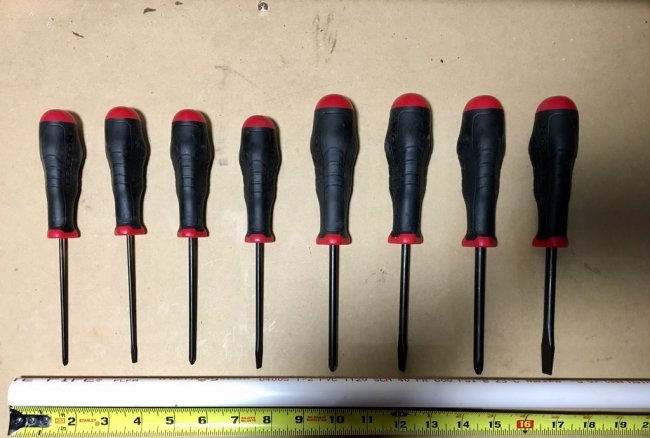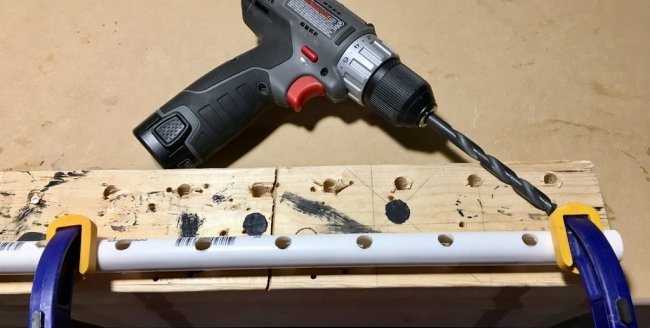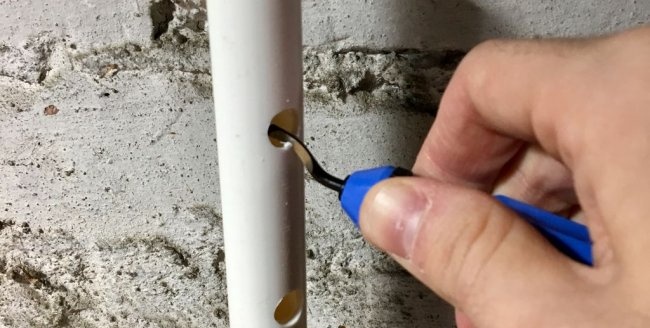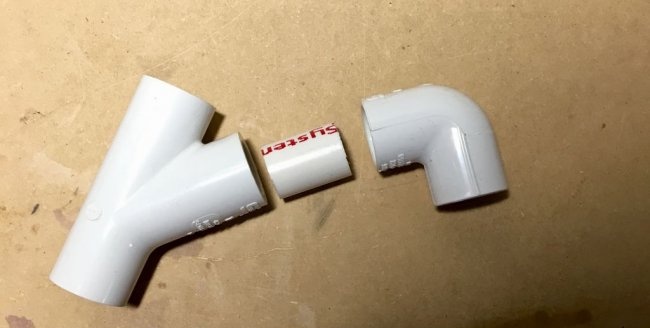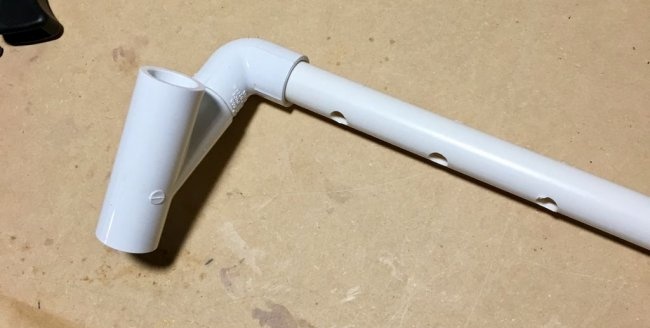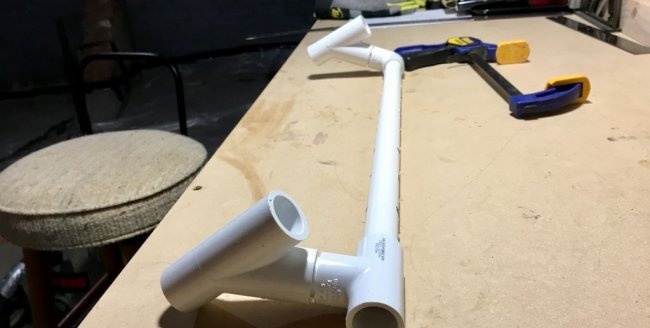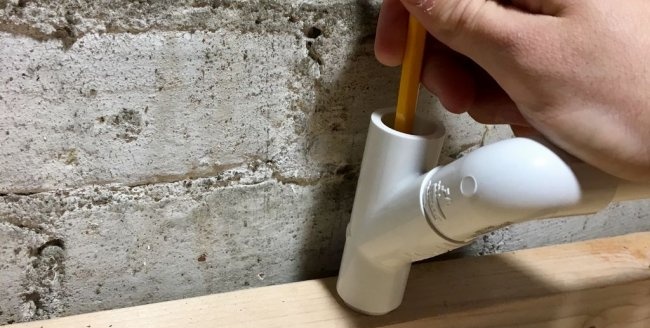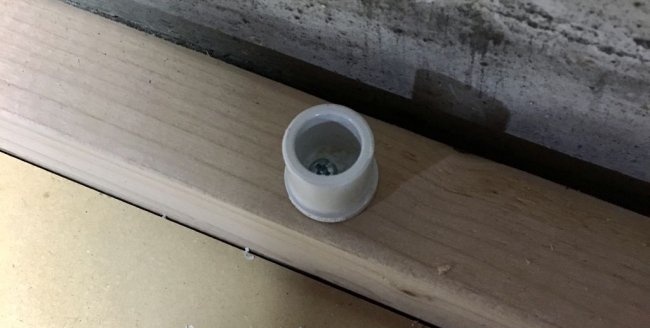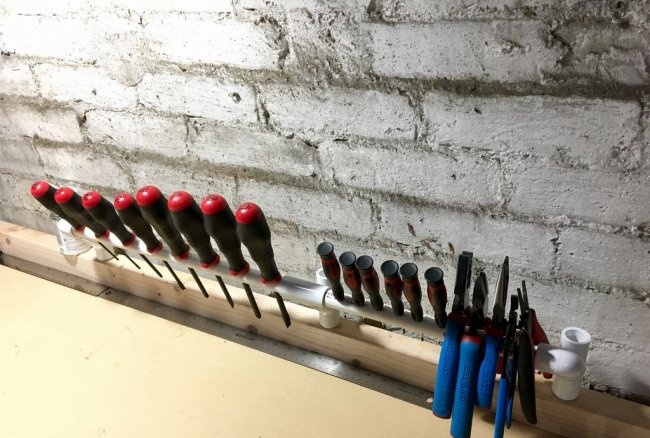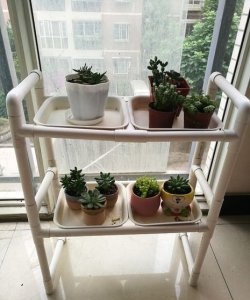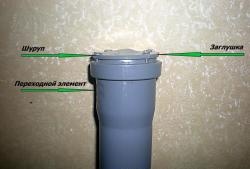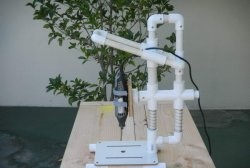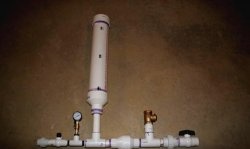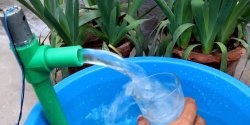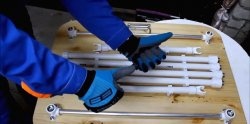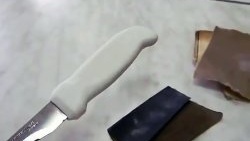PVC pipe tool stand
I decided to make a stand for screwdrivers and pliers. It must be attached to the table, since it is planned to move the workplace in the near future. I also wanted it to be possible to change its size depending on the number of tools available. After looking at various options, I came to the conclusion that I could quickly and easily make a stand out of PVC pipes.
Tools:
- Roulette.
- Marker.
- Hacksaw (or plastic pipe scissors).
- Drill and drill bits.
- Clamps.
- Scraper.
- Rubber hammer.
Materials:
Below are the materials I used. Their sizes will depend on the dimensions of your stand.
- 150 cm 12 mm PVC pipe.
- 2 mm PVC tee 45 degrees.
- 12 mm PVC tee 90 degrees.
- 12 mm PVC bend 90 degrees.
- 12 mm PVC plugs.
- wood screws.
- PVC glue
We measure and cut PVC pipes
To find out what length of pipe I needed, I laid out the screwdrivers at a distance of 4 cm from each other. Thus, it turned out to be 62 cm (don’t forget to leave room at the edges for the fitting).
For smaller screwdrivers and wrenches, the pipe length was 30 cm.
Drill and process holes with a scraper
Using a marker, I made marks every 4 cm along the entire 62 cm pipe and drilled holes in them. First 6 mm, then 8 mm drill. I had a hard time drilling them in line, but slight deviations do not greatly affect the functionality of the stand. Then you need to check whether all the screwdrivers fit in the pipe. After cleaning the holes, I found that they were too small for some screwdrivers, so I widened them with a scraper.
For small screwdrivers and pliers, I made holes with the same diameter of 8 mm, but spaced them closer together.
Cut off the bushing and assemble
Using leftover PVC pipe, I cut 3 2.5cm sleeves that I used to connect the elbows to the 45° tees (see photo). It is important that when attaching the bushing, the gap on all elements is the same - it is better if the elbow and tee are adjacent to each other. Use gentle hammer blows to connect the parts more tightly.
At this stage the bushings can be glued, but I decided to skip this step. Next, I assembled the entire structure and made sure that everything fit in size.
We make holes in the plugs and attach them to the table
To attach the stand to the desktop, I used PVC plugs and drilled holes in them. After inserting the plugs into the bottom of each tee, I placed the stand against the mounting location and made marks through the holes where I needed to make the holes for the screws. After that, I screwed the plugs to the table and put the assembled stand on them. The structure can be secured with glue, but for me it turned out to be quite stable.
Resizing
For convenience, the dimensions of the stand can be changed both in width and height.
Similar master classes
Particularly interesting
Comments (1)

